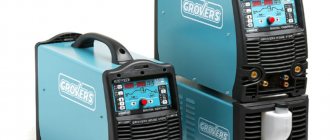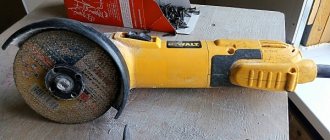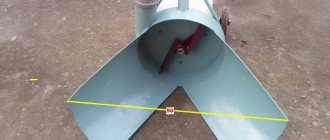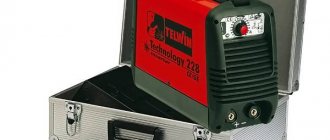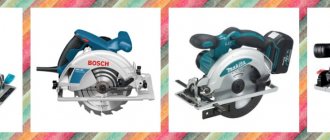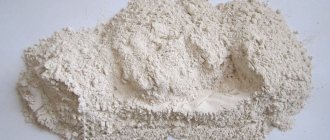Features of manufacturing a cellar elevator
The elevator is a fairly heavy structure; its fixation area is a load-bearing wall.
When planning the manufacture of a home elevator, you need to understand that this is a heavy structure that needs strong, reliable support and foundation.
When making a cellar lift with your own hands, you must follow these rules:
- Follow the manufacturers' instructions for the components that will be used during assembly.
- Build a powerful foundation designed to support the weight of the frame, equipment, people and cargo, plus a reserve of at least 30%.
- The guides can only be attached to concrete or brick walls with a thickness of two stones or more.
- Have sufficient space to accommodate the cabin and platform. These are quite voluminous structures that require a lot of space.
The possibility of a power outage or sudden failure of one of the mechanisms should be considered. For such cases, a portable or stationary ladder and a battery-powered light source should be prepared. Another effective solution is a hand winch. The ascent and descent will be slower, but the elevator will remain operational.
Difficulties in making a lift
An installed car may break down for the following reasons:
- The weight of the vehicle places a load that the drive or actuator cannot support.
- The locking mechanism is not working properly.
- The supporting device cannot withstand the applied loads.
- Lift supports are not positioned or secured correctly.
Difficulties in manufacturing arise due to the fact that some structural elements cannot be made with your own hands. An example is long-length lead screws. Therefore, they rarely make a scissor lift with their own hands. Drawings of homemade structures often include the creation of a tipper, which is much easier to manufacture. If necessary, do-it-yourself scissor lift drawings can be downloaded on the Internet, but it is worth considering that most of the parts will have to be purchased, due to which the cost of the finished structure will not decrease. In addition, you will have to calculate the strength of all elements used.
Such work can only be performed efficiently by an engineer who has extensive experience. If errors are made at the time of calculations, there is a possibility that the lifting mechanism will not withstand the applied load. Therefore, if there is no confidence that the skills and knowledge will be enough to implement a complex project, it is best to create less complex mechanisms that will be more reliable.
Requirements for a home lift
The main criterion for an elevator is lifting capacity.
To make a cellar lift with your own hands, you need to carefully study the structure of this structure and the requirements that apply to it.
Standard elevators consist of the following parts and mechanisms:
- Lifting device. Operates by manual force or electricity.
- Platform. A base used to accommodate a movable fragment.
- Cabin. Designed to accommodate a person and cargo. Can be open or closed.
- Rails. They are mounted on the wall and serve as guides for the movement of the cabin.
- Controls. These include starters, relays, fuses and other parts that regulate the operation of the structure.
A homemade elevator to the cellar must meet the following criteria:
- safety;
- sufficient load capacity;
- ease of use;
- efficiency;
- availability of an insurance system;
- aesthetics;
- durability;
- Possibility of DIY installation.
When choosing a control method, it is recommended to use a remote control with lifting, lowering and emergency stop buttons.
Operating principles of various elevator systems
Elevator lifts are divided into the following main types:
1) Electric
(electromechanical).
2) Hydraulic
.
3) Pneumatic
(air lift).
DIY elevator guides
To move the elevator, some kind of power device is required, the most convenient and practical power supply for which is electricity. Therefore, electric motors are part of the drive, regardless of its type. However, it is customary to call the elevators of the most common cable system electric, probably because in them the engine force is directly transmitted to the cables that move the cabin.
1. Electric elevator
, which we use in multi-storey buildings, works on the principle of a counterweight: the cabin is fixed on cables, at the other ends of which a counterweight is attached. The drive mechanism, located in the upper part of the elevator (engine room), having received an electrical signal from the panel buttons, sets the system in motion through a pulley wheel. Thanks to the counterweight, cabin inertia is reduced to a minimum, which ensures smooth movement and allows you to get by with a significantly lower power electric motor.
2. Hydraulic lift
works on the principle of a jack. The electric motor creates fluid pressure in the system, and the hydraulic cylinder pushes the cabin upward. No electricity is consumed during descent. This type of elevator has no counterweights and is silent. But due to the high pressure in the hydraulic system, it requires qualified maintenance and a powerful power plant.
3.
The pneumatic elevator
cabin works like a piston. To move the elevator upward, a vacuum of air is created in the air shaft above the cabin by powerful fans. As a result, increased pressure under the cabin pushes it upward. To descend, the pressure at the top and bottom of the cabin is equalized, and it smoothly goes down.
DIY pneumatic elevator
Now let’s ask ourselves the question: how to make an elevator with your own hands in the house, is it feasible for your hands and wallet?
A pneumatic elevator requires components that are almost impossible to make with your own hands. If you buy ready-made ones or order their production, the very idea of making an elevator with your own hands is lost. And the final cost will be rounded up to such a figure that purchasing and installing a ready-made airlift will cost less.
DIY hydraulic lift
Now - hydraulics
. Alas, it is no less difficult and expensive. A high-performance hydraulic pumping station will be required, and it is not cheap. Well, and most importantly – the hydraulic cylinder. Even raising an elevator car one floor requires significant extension of the rods. Dump trucks have similar units, but even if we decide to install such a hydraulic cylinder, we will be faced with another problem - lowering the cab. Automotive-type hydraulic cylinders fold under the weight of the heavy load bed of the dump truck. The weight of the elevator car will not be enough here. Combining various other ready-made mechanisms will be no less difficult and expensive.
The solution to the question of how to make an elevator yourself is obvious: make an electromechanical
.
Types of elevators to the basement
Electric motor lift
The basement lift can be equipped with various types of drives, differing in the operating principle of the applied force.
Electrical structures are equipped with a motor, gearbox and winch. The movement of the cabin is carried out by winding and unwinding the cable from the drum. To ensure smooth movement and reduce the load on the motor, the platform is equipped with a counterweight, the mass of which matches the moving part or slightly exceeds it. The system is reliable, but subject to rapid wear due to the presence of many parts that rub under load. The device produces a loud noise that can be heard in all corners of the building.
Hydraulic elevators operate quietly; the load is lifted by a piston into which a special liquid is pumped through a high-pressure hose. The power plant can be located below, above, even to the side of the shaft. In case of power outages, provision is made for the installation of hand pumps. The downside of this solution is the likelihood of hose ruptures and oil contamination of the entire basement.

